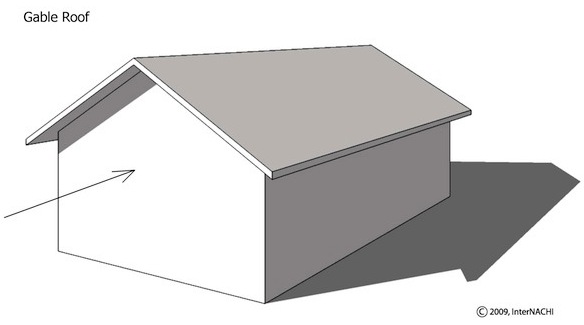Mastering Roof Inspections: Wind Damage, Part 4
by Kenton Shepard and Nick Gromicko, CMI®
The purpose of the series “Mastering Roof Inspections” is to teach home inspectors, as well as insurance and roofing professionals, how to recognize proper and improper conditions while inspecting steep-slope, residential roofs. This series covers roof framing, roofing materials, the attic, and the conditions that affect the roofing materials and components, including wind and hail.
- Direct and Indirect Damage
- Determining Wind Direction
- Material Condition
- Building Characteristics
- Mitigating Factors
Roof-covering materials -- especially more brittle materials, such as tile -- may be damaged by wind-blown debris called missiles. Missiles can include other roofing on the home which has been pulled loose by the wind and blown onto roofing on adjacent roof slopes, or tree limbs, gravel, yard apparatus, or anything else capable of damaging roofing that has been carried aloft by the wind.

Missiles aren’t always items that were laying around the yard. Anything that has blown through the air and damages the roof or siding can be called a missile.

This particular missile was flying through the air under its own power before it was caught in a strong gust and blown into the side of the house.
Material Condition
Wind will damage materials in poor condition before it damages materials in good condition. In addition to deterioration of the roofing material itself, fastening systems deteriorate. In some systems, such as slate, the fasteners may be the weakest part of the system, corroding to a point at which wind will cause them to fail.
BUILDING CHARACTERISTICS
The nature of wind damage is also affected by the characteristics of the buildings themselves.
The important building characteristics which affect the potential for wind damage include the following.
Age of Home
Many new building materials and methods have been developed over the past 30 years. At the same time, our understanding of how buildings operate and react to conditions has improved, and, as a result, building codes have become more stringent.
Type of Construction

Wind damage varies with the type of construction. For example, mobile and modular homes are more likely to suffer damage than homes with a more substantial structure and higher-quality materials.
Building Quality
Some types of roofing materials are more vulnerable to wind damage than others. The type and quality of both the installation and the materials used in the roofing system will affect the chances for wind damage.
Roof Shape and Slope
Roof structures of different styles obviously have different shapes. Each shape will affect wind behavior differently, as well as the location and amount of damage.


The hip roof will have a section of roof positioned perpendicular to the wind, offering more resistance and greater opportunity for damage to occur. The potential will vary somewhat with the type of roof-covering material and the quality of installation.
**************************************************
Learn how to master a roof inspection from beginning to end by reading the entire InterNACHI series: Mastering Roof Inspections.
Take InterNACHI’s free, online Roofing Inspection Course
Mastering Roof Inspections
Roofing Underlayment Types
Inspecting Underlayment on Roofs
Fall-Arrest Systems
Roofing (consumer-targeted)
More inspection articles like this

